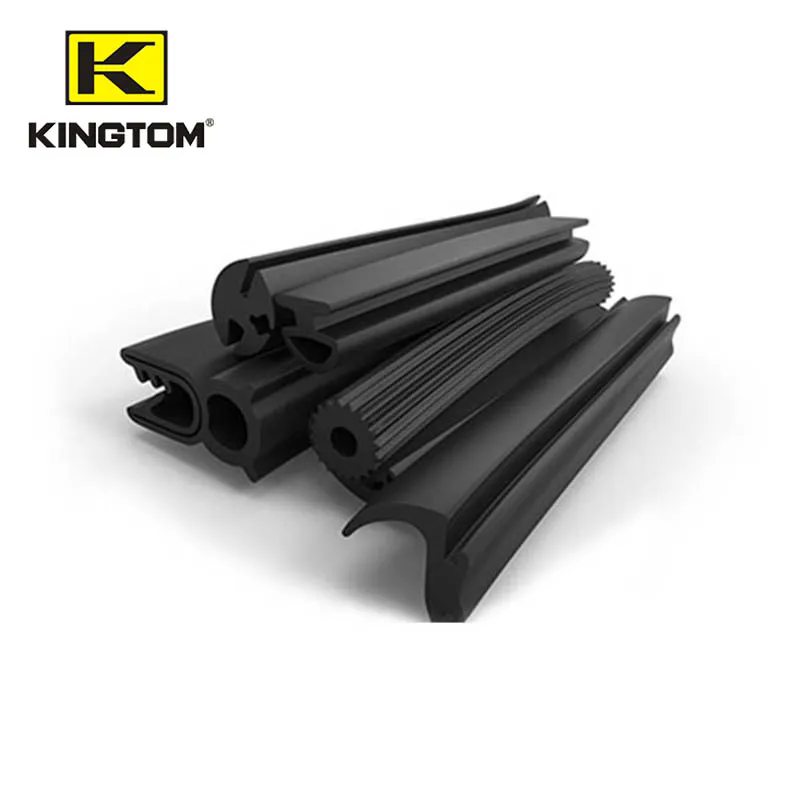The Ultimate Guide to Rubber Extrusion Parts: Applications, Benefits, and How to Choose the Right Ones
2024-10-18
Rubber extrusion parts are essential components in a wide range of industries, from automotive and aerospace to construction and consumer goods. These custom-shaped rubber products are created by forcing raw rubber through a specialized die to produce continuous profiles with precise dimensions. In this blog, we’ll explore everything you need to know about rubber extrusions, their manufacturing process, common applications, and key considerations when selecting the perfect rubber extrusion parts for your needs.
What Are Rubber Extrusion Parts?
Rubber extrusion parts are continuous shapes or profiles made by pushing rubber material through a die with a specific cross-sectional design. Once the material passes through the die, it is vulcanized (cured) to enhance strength and flexibility. Rubber extrusion allows for the creation of gaskets, seals, tubes, and other components used in both industrial and consumer products.
Some common forms include:
- Tubes and hoses
- U-channels and strips
- O-ring cords
- Seals and gaskets
The Rubber Extrusion Process Explained
1. Material Preparation
- Natural or synthetic rubber (like EPDM, silicone, or nitrile) is selected and mixed with necessary additives to enhance performance, such as UV resistance or heat tolerance.
2. Extrusion
- The rubber compound is fed into an extruder machine, where it is heated and forced through a die with the desired shape.
3. Vulcanization
- The extruded rubber is passed through a vulcanization oven to cure the material, giving it the necessary elasticity and durability.
4. Cutting and Finishing
- The continuous extrusion is cut to size and inspected for quality before being packaged for delivery.
Materials Commonly Used in Rubber Extrusion Parts
- EPDM (Ethylene Propylene Diene Monomer): Excellent resistance to UV, ozone, and weather exposure, ideal for outdoor applications.
- Silicone: High heat resistance and flexibility, suitable for medical, food-grade, and automotive applications.
- Nitrile (NBR): Offers superior resistance to oil and fuel, making it perfect for automotive and industrial machinery.
- Neoprene: Known for its durability, chemical resistance, and versatility, widely used for seals and gaskets.
Applications of Rubber Extrusion Parts
1. Automotive Industry
- Used for door seals, window channels, weather stripping, and tubing in fuel systems.
2. Construction and Building
- Rubber extrusions like U-channels and gaskets are used for insulation, sealing windows and doors, and waterproofing.
3. Aerospace and Marine
- High-performance rubber seals withstand extreme temperatures and pressures, making them essential in aircraft and marine vessels.
4. Industrial Equipment
- Used in conveyors, machinery gaskets, and hoses for high-performance industrial systems.
5. Consumer Goods
- Rubber tubing and profiles are found in appliances, toys, medical devices, and more.
Benefits of Rubber Extrusion Parts
1. Customizable Shapes and Profiles
- Extrusion allows for intricate shapes that meet specific design requirements.
2. Durability and Flexibility
- Rubber’s ability to stretch and return to its original shape ensures a long product life, even in harsh environments.
3. Seamless Production
- Continuous profiles reduce the need for seams, enhancing the strength and reliability of the product.
4. Chemical and Temperature Resistance
- Specialized rubber materials can withstand extreme temperatures, oils, and chemicals, ensuring reliability across industries.
5. Cost-Effective Manufacturing
- The extrusion process minimizes waste and speeds up production, resulting in cost savings for manufacturers.
How to Choose the Right Rubber Extrusion Parts
1. Determine Application Requirements
- Identify whether the rubber part will need to resist heat, chemicals, or outdoor exposure.
2. Select the Right Material
- EPDM is great for outdoor use, while silicone is ideal for high-heat environments.
3. Check Compliance
- Ensure that the rubber material meets any regulatory requirements (e.g., food-grade or medical compliance).
4. Assess Dimensional Accuracy
- Verify that the extrusions have precise tolerances to fit seamlessly into your product.
5. Partner with a Reliable Supplier
- Work with a supplier experienced in custom rubber extrusion to ensure high-quality components and quick turnaround times.
Maintenance and Care of Rubber Extrusion Parts
1. Regular Inspection
- Check for signs of wear, cracking, or deformation in seals and gaskets.
2. Proper Cleaning
- Clean rubber parts with mild soap and water to prevent the buildup of dirt and contaminants. Avoid using harsh chemicals that can degrade the rubber.
3. Storage Guidelines
- Store rubber extrusions in a cool, dry place, away from direct sunlight, to prevent premature aging.
4. Replacement Schedule
- Replace worn-out parts on time to prevent leaks or equipment failures.
Conclusion: The Versatile Solution for Industry and Beyond
Rubber extrusion parts are indispensable in modern manufacturing, offering a blend of flexibility, durability, and cost-effectiveness. Whether you need weatherproof seals for a construction project or high-precision tubing for industrial machinery, these parts provide a reliable solution tailored to your needs. With the right material selection and design, rubber extrusions can enhance the performance of your products and systems.
Explore custom rubber extrusion solutions today and discover how these versatile components can add value to your business!



